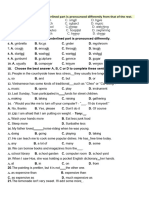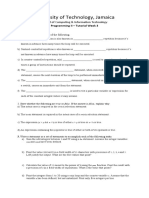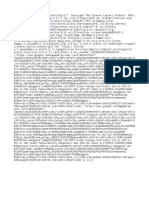0% found this document useful (0 votes)
12 views6 pagesR Inter
The document provides an overview of basic R concepts, including data types, variables, vectors, arrays, matrices, data frames, lists, functions, control structures, and data manipulation with dplyr. It also covers data visualization using ggplot2 and introduces advanced R topics such as object-oriented programming and regular expressions. Each concept is explained with definitions and examples for clarity.
Uploaded by
Md YusufCopyright
© © All Rights Reserved
We take content rights seriously. If you suspect this is your content, claim it here.
Available Formats
Download as PDF, TXT or read online on Scribd
0% found this document useful (0 votes)
12 views6 pagesR Inter
The document provides an overview of basic R concepts, including data types, variables, vectors, arrays, matrices, data frames, lists, functions, control structures, and data manipulation with dplyr. It also covers data visualization using ggplot2 and introduces advanced R topics such as object-oriented programming and regular expressions. Each concept is explained with definitions and examples for clarity.
Uploaded by
Md YusufCopyright
© © All Rights Reserved
We take content rights seriously. If you suspect this is your content, claim it here.
Available Formats
Download as PDF, TXT or read online on Scribd
/ 6






















































































